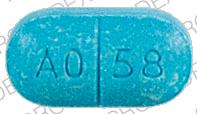Guaifenesin / Phenylpropanolamine Dosage
Applies to the following strengths: 50 mg-6.25 mg/5 mL; 50 mg-6.25 mg/mL; 400 mg-75 mg; 600 mg-75 mg; 600 mg-37.5 mg; 100 mg-20 mg/5 mL; 200 mg-25 mg; 100 mg-12.5 mg/5 mL; 1200 mg-75 mg
Usual Adult Dose for:
Usual Pediatric Dose for:
Additional dosage information:
Usual Adult Dose for Cough and Nasal Congestion
5 mL to 10 mL (100 mg-12.5 mg/5 mL) orally every 4 hours.
-or-
20 mL (50 mg-6.25 mg/5 mL) orally every 4 hours.
-or-
Extended release: 1 tablet (40 mg to 50 mg phenylpropanolamine) orally every 12 hours.
Maximum is 150 mg phenylpropanolamine or 2.4 grams of guaifenesin/day.
Usual Pediatric Dose for Cough and Nasal Congestion
6 to 12 years:
1 mL (50 mg-6.25 mg/mL) orally every 4 hours. (Drops - Note concentration).
-or-
1 mL (30 mg-6.25 mg/mL) orally every 4 hours. (Drops - Note concentration).
-or-
5 mL (100 mg-6.25 mg/5 mL) orally every 4 hours.
Maximum is 75 mg phenylpropanolamine or 1.2 grams of guaifenesin/day.
Over 12 years:
10 mL (100 mg-6.25 mg/5 mL) orally every 4 hours.
Maximum is 150 mg phenylpropanolamine or 2.4 grams of guaifenesin/day.
Renal Dose Adjustments
Data not available
Liver Dose Adjustments
Data not available
Dose Adjustments
Phenylpropanolamine is eliminated by the kidney and may accumulate in patients with renal dysfunction. Patients with renal dysfunction should be monitored for signs and symptoms of toxicity when using phenylpropanolamine.
Precautions
Check concentration.
Dialysis
Data not available
Other Comments
In November 2000, the Food and Drug Administration (FDA), in response to reports of increased risk of hemorrhagic stroke, requested that all drug companies discontinue marketing products containing phenylpropanolamine.
More about guaifenesin / phenylpropanolamine
- Check interactions
- Compare alternatives
- Drug images
- Side effects
- During pregnancy
- Drug class: upper respiratory combinations
Related treatment guides
Further information
Always consult your healthcare provider to ensure the information displayed on this page applies to your personal circumstances.

